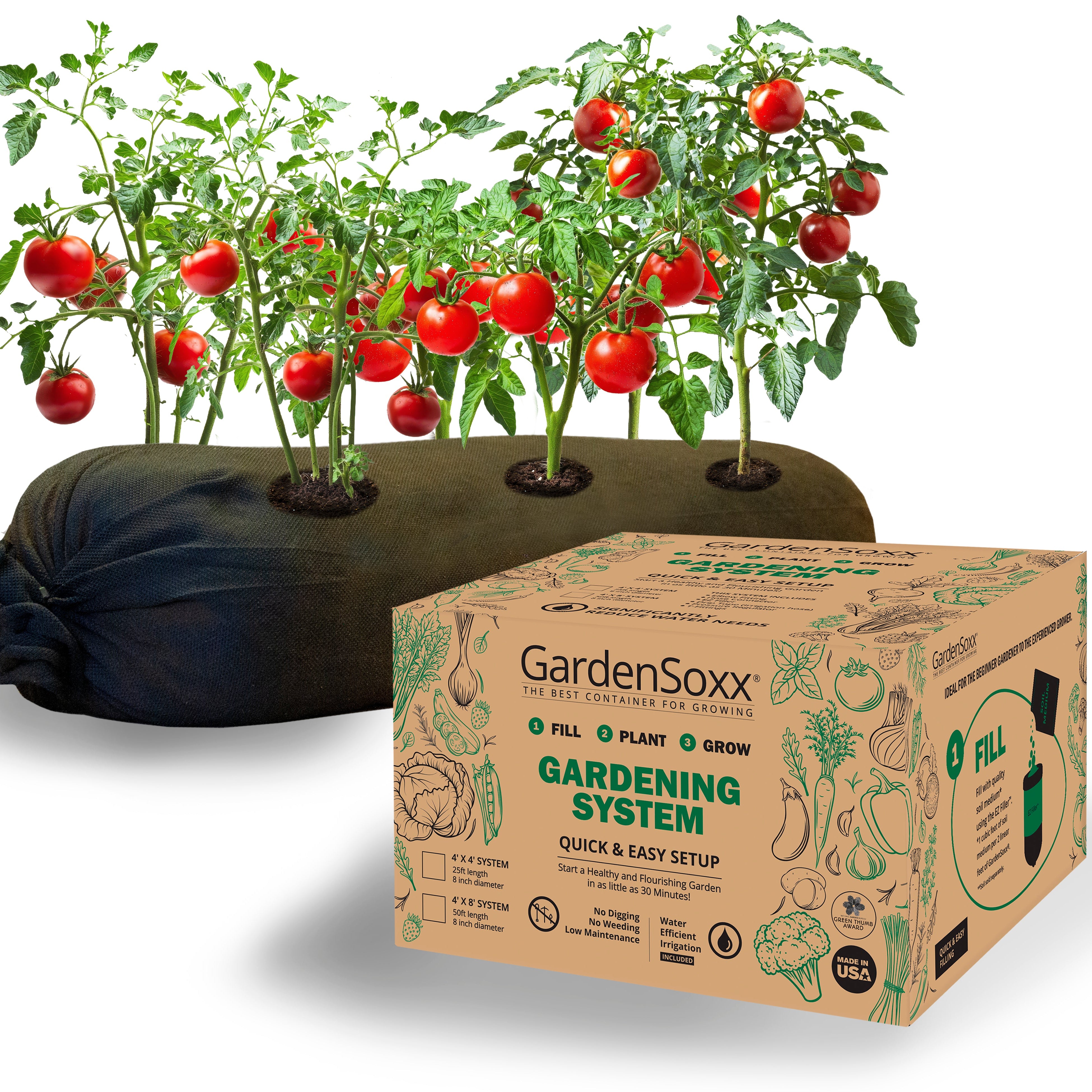Swiss Chard
Have you been wondering how to grow Swiss Chard at home? A green that goes by many names, Swiss Chard is also commonly known as Roman Kale, Spinach Beet, Mangold and even a few more. This leafy green from the Amaranthaceae Plant Family stands out from the rest with its bright white, yellow and red stems.
It is considered a superfood because of its high vitamin content, and its ability to regulate blood sugar, detox the body and boost the immune system. In fact, just one cup of Swiss Chard will provide you with over 300% of the recommended daily intake of vitamin K! It can be consumed raw, chopped into salad, but is also excellent in soups or sauteed into stirfry.

Growing swiss chard in GardenSoxx® | Plant Family: Amaranthaceae
Different Varieties of Swiss Chard
Experimenting with different varieties of Swiss Chard can result in a vibrantly colorful garden - as this nutritious green comes in a stunning array of bright-stemmed cultivars that range from white to yellow to fuchsia and more. Going for a Bright Lights mixed seed packet is a great way to try out a few different cultivars at once. Otherwise, here are some specific varieties that are popular among home growers:
Disease and bolt-resistant, the Peppermint Swiss Chard variety is a high-performing cultivar known for its stiped pink and white stems. This variety will be ready to harvest in around 60 days and is adaptable to most growing zones.
A frost-resistant show-stopper, with its stunning bright yellow stems - the Heart of Gold variety has a pleasantly earthy taste and wider stems than some other cultivars. The plants are hardy and vigorous, producing an abundant harvest throughout the growing season.
Said to be the best-tasting Swiss Chard variety, Lucullus is known for its bright white, wide stems and curly savoy-like dark green glossy leaves. This reliable cultivar is a bit quicker to grow, maturing in about 55 days.
Charbell Swiss Chard is known for its colorful and delicious baby leaves that can be harvested at only 28 days from planting. Letting them grow to full size (around 65 days or so) will yield gorgeous deep magenta-colored stems with beautifully textured dark green leaves.
Nutritional Information For Swiss Chard
Nutritional Facts - per 100/g
| Nutrient | Amount | % Daily Value |
|---|---|---|
| Calories | 20 | - |
| Total Fat | 0.1 g | - |
| Sodium | 179 mg | - |
| Potassium | 549 mg | - |
| Dietary Fiber | 2.1 g | - |
| Sugar | 1.1 g | - |
| Protein | 1.9 g | - |
| Vitamin C | - | 30% |
| Iron | - | 13% |
| Vitamin B6 | - | 5% |
| Magnesium | - | 30% |
| Calcium | - | 4% |
How to Grow Swiss Chard in Your GardenSoxx®
If planting from seed, soak seeds for 24 hours before planting and get them into the soil about 2 to 3 weeks before the last spring frost. You can also plant a late crop of Swiss Chard for a fall harvest about 40 days before the first fall frost date. Seeds should be sown about an inch deep, 5 inches apart. Plant in a location that gets full sun, in well-draining soil.
Swiss Chard Seed to Harvest Time: Approximately 50 days

How to Harvest Swiss Chard
Once the plants have reached about 8 inches tall, cut off the outer leaves leaving about 1.5 inches above the ground and being careful not the damage the core of the plant. If you cut the outer leaves regularly, leaving the inner leaves to keep growing, you can get enjoy a continuous harvest throughout the season.


















































